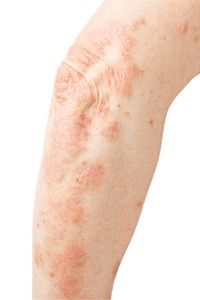Although bacteria can often touch or live on the skin without causing an infection, the risk of getting a bacterial skin infection becomes much higher when the skin is broken. People who have certain medical conditions, including diabetes, acquired immune deficiency syndrome (AIDS) or skin damage from sunburn, are also more likely to be at risk. Many different types of bacterial infections can enter through the skin, but a few are more frequent than others.
Cellulitis, an infection beneath the skin's surface, normally happens after a break in the skin, such as a surgical incision, cut, wound or insect bite [source: Stulberg]. Those at risk for cellulitis include people who have weak immune systems or who handle fish, meat, poultry or soil without wearing gloves [source: WebMD].
Advertisement
Folliculitis, an infection of the hair follicles, happens because the follicles have been damaged. Improperly treated pools or hot tubs, shaving, tight clothing, and bacteria from nearby scrapes and cuts can all cause folliculitis [source: WebMD].
Boils and carbuncles are also infected hair follicles, but they are usually much deeper [source: Stulberg]. These red, pus-filled bumps are called boils when only one is present or carbuncles when they form in groups.
Impetigo can develop if you have a cut or an insect bite, but it also can occur in previously healthy skin [source: Mayo Clinic]. The condition, marked by sores on the face, usually occurs in young children and is very contagious. Adults can also get impetigo if a wound or break is present on the skin.
Bacterial skin infection symptoms run the gamut from barely noticeable to life-threatening -- read on to find out how to tell the difference and when you should worry.
Advertisement

